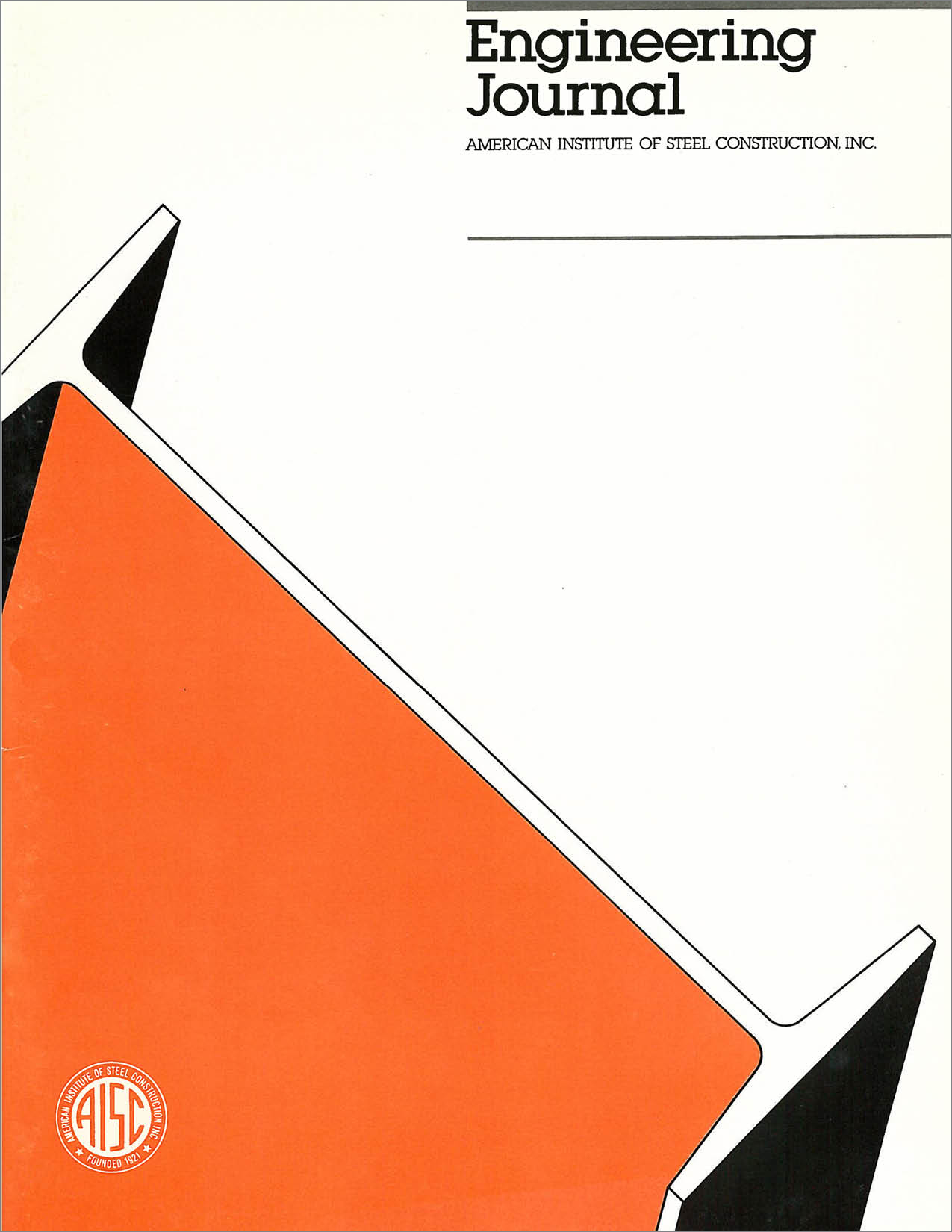Experimental Study of Gusseted Connections
DOI:
https://doi.org/10.62913/engj.v27i3.555Abstract
Gusset plate connections are common in lateral bracing systems in steel construction. Recent analytical studies have demonstrated that the gusset plate produces a rigid beam-to-column connection, even if the beam flanges are not connected to the column. The importance of this rigid beam to-column connection is that the gusset plate carries a significant load from "frame action" in addition to that from the diagonal bracing member. The influence of framing members on gusset plate behavior has not yet been studied experimentally and the effect of the stresses produced by frame action on the gusset plate capacity is not known. In addition, tests to date have all used configurations in which the centroidal axes of the members framing into the connection have all intersected at a single point. The loads introduced into a gusseted connection when the centroidal axes of the framing members do not intersect at a point have not been experimentally determined. Finally, the column in a lateral bracing system may be oriented so that the gusset is connected either to the flange or to the web. Unless the web is stiffened, a connection to the column web is more flexible than one in which the gusset is connected to the flange. No experimental work to date has addressed the difference in performance between these two types of column connection and no data is available to indicate whether stiffening of the web is required.

